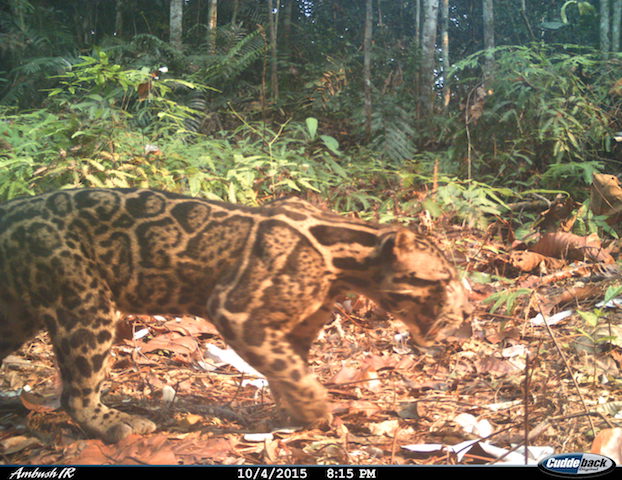Research
Long Term Ecological Research
Clouded Leopard Programme
Long term studies (Borneo, Myanmar)
Clouded Leopard Camera Trap Database
Policy Toolkits
The Team
Clouded Leopard Programme Video Series
Publications
Our field research reveals a greater understanding of the ecology and behaviour of this elusive cat, aiding site-based conservation efforts and further informing and parameterizing our landscape scale models.
In Sabah, Borneo we are gathering data on species occurrence (through intensive camera trap monitoring in both protected and human dominated landscapes), movement (from deploying GPS collars), and genetics, which provide the foundation to produce robust predictions of distribution and density, movement and gene flow. These data contribute to our populations and connectivity models, and the prediction of likely changes in population size, gene flow and genetic diversity effects of future changes.
In Myanmar we have been surveying Htamanthi Wildlife Sanctuary, in the Northern Forest Complex, Sagaing Region, Myanmar, since 2014. The area is important for transboundary biodiversity habitat conservation since it lies at the confluence of three biodiversity hotspots, the Himalayas and the mountains of Southwest China and Indo-Burma, making it a critical node for regional wildlife connectivity. Seven felids co-exist in this area – tiger, mainland clouded leopard, Asiatic golden cat, marbled cat, leopard, jungle cat, and leopard cat. With data from annual surveys since 2014, in addition to species landscape modelling, we aim to explore intra-guild interactions among mesopredators, clouded leopard, marbled cat, golden cat, and the much larger tiger in the Htamanthi Wildlife Sanctuary.









